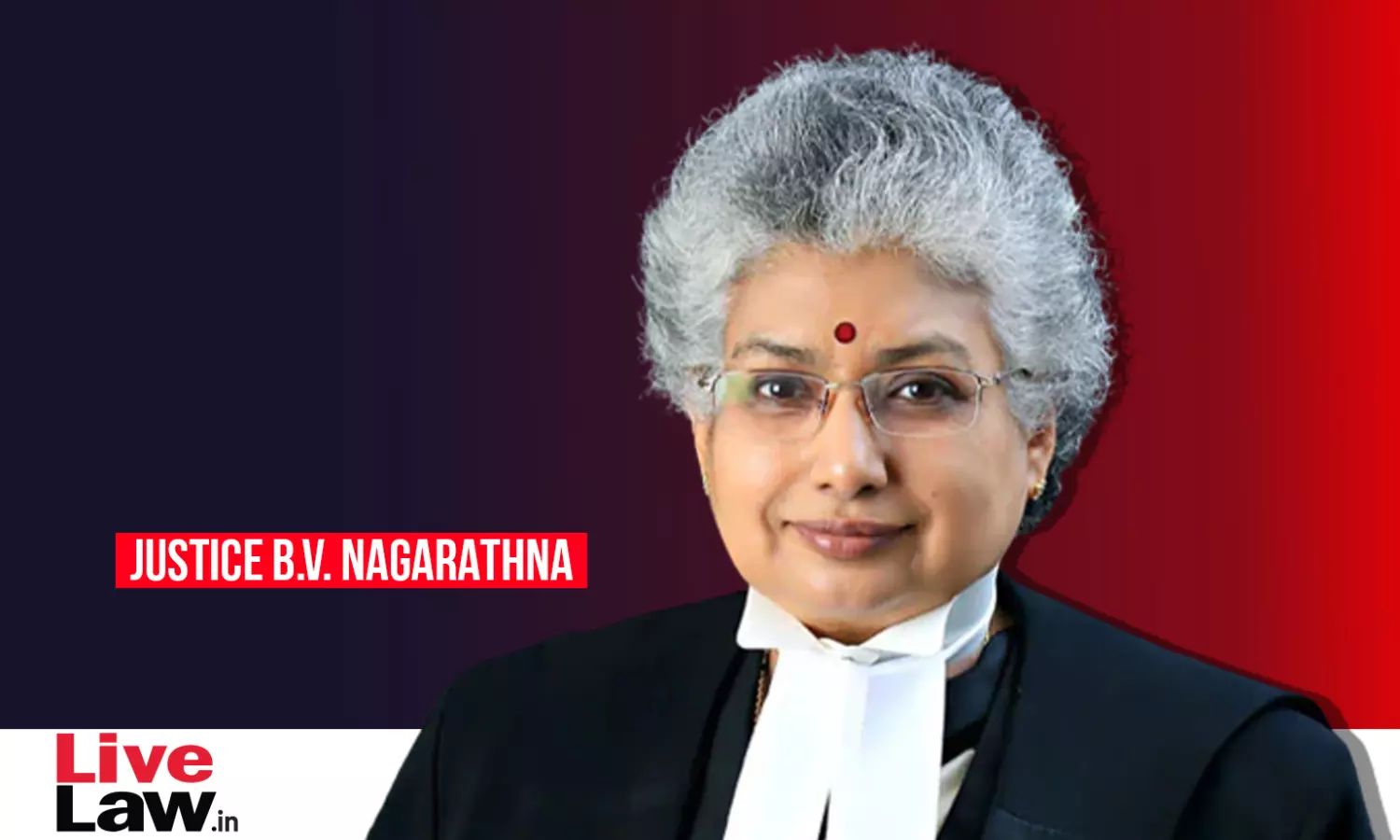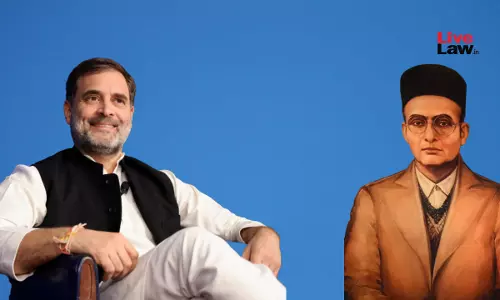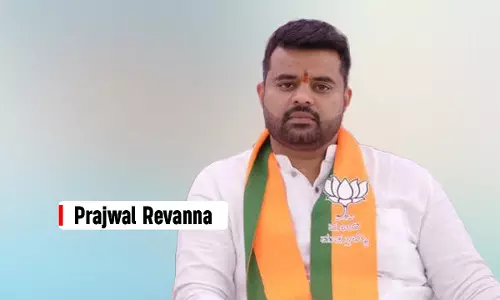Constitution Is Stronger Now Because Of Kesavananda Bharati Judgment : Justice BV Nagarathna

Supreme Court judge Justice BV Nagarathna said that the Constitution of India is stronger now because of the Kesavananda Bharati judgment, which laid down the basic structure doctrine. She opined that the basic structure doctrine is a fine example of transformative Constitutionalism. These comments assume relevance in the wake of the renewed debate on the basic structure doctrine after...
Supreme Court judge Justice BV Nagarathna said that the Constitution of India is stronger now because of the Kesavananda Bharati judgment, which laid down the basic structure doctrine.
She opined that the basic structure doctrine is a fine example of transformative Constitutionalism. These comments assume relevance in the wake of the renewed debate on the basic structure doctrine after Vice President Jagdeep Dhankhar recently criticised Kesavanda Bharti judgment as laying down a wrong precedent. It is also relevant to note that Chief Justice of India DY Chandrachud had also recently highlighted the importance of basic structure doctrine, and lauded the same, by terming it as the “north star” which guides the interpretation of the Constitution.
Justice B.V. Nagarathna, was delivering the Chief Justice KK Usha Memorial Lecture on the topic 'Transformative Constitutionalism' organised by the Kerala Federation of Women Lawyers at the High Court of Kerala. In her lecture, she termed the Constitution “a great social document almost revolutionary in its aim in transforming society”.
She reminded that, "Judges must have the pulse of the people whom they adjudicate, in their hearts, and justice in their minds while interpreting the laws and enforcing rights". She added that in order to interpret the Constitution transformatively, one must first understand the people for whom it was made.
Justice Nagarathna in her speech, underlined the duty of lawyers and the judiciary in ensuring that the Constitution would not remain a stagnant document, but last for future generations, as well. She explained how transformative constitutionalism aids in this approach by attaching sanctity to the text of the document.
"We all know our Constitution is not a stagnant document but a living tree, and a dynamic one. Thus, the interpretation of Constitution is an evolving one. Living tree approach has been invoked to read, and justify new rights into the Constitution".
She added that it was hence the duty of the members of the Bar and the Bench to ensure that this 'living tree' was 'evergreen'.
Enactment Of The Constitution - A Moment Of Transformation Of The Country
Talking about the concept of 'transformative constitutionalism', Justice Nagarathna emphasized that although it had become a part of the Constitutional discourse only recently, it had already been in practice in the Country earlier. In fact, she stated that the very moment of enactment of the Indian Constitution was in itself, a moment of 'profound transformation' of the Country. She explained that this transformation of the Country by the enforcement of the Constitution had come about in two ways; firstly, by transforming the legal relationship between the individuals and the citizens, wherein the subjects from the colonial regime came to be citizens of the Republic; and secondly, by the reconstruction of the State, by having the locus of concentration power in the people of India and not in the State.
"Understood in that sense, the framing of the Constitution did not only mark the end of the struggle against political subjugation, but equally demonstrates the struggle for self-determination against multi-layered oppressive structure in the society such as caste, race, creed, religion, and so on," the judge noted.
Justice Nagarathna added that in its version of 'transformative Constitutionalism', the Constitution sought to overcome both alien colonial domination, as well as indigenous social and economic domination. She noted that even at present, the social relationships were sought to be transformed by this concept of transformative constitutionalism.
The Judge noted that in this sense, transformative constitutionalism was a very 'intimate concept' for lawyers and judges, which is not merely utilized for "healing the wound of the past, but also for guiding us to a better future, and also to steer society in the direction of democratic egalitarianism, recognition and protection of fundamental freedoms, and peaceful coexistence and developmental opportunities".
The Three Vehicles For Carrying Out Transformative Constitutionalism
Justice Nagarathna in her speech, touched upon three foundational principles of the Constitution which also act as the three vehicles for realizing the agenda of transformation of the Constitution, namely, the Courts entrusted with task of 'breathing life' into the Fundamental rights and other provisions of the Constitution; the popular democracy; and a dynamic executive for achieving distributive justice, attainment of socio economic rights and good governance.
She went on to add that the 'transformative vision' of the Constitution could be achieved through three means - equality, fraternity, and liberty.
Justice Nagarathna highlighted that the provisions of equality in the Constitution understands this concept as overcoming institutional and structural barriers that had kept individuals and groups in a state of subordination. "The equality code enshrines the vision of substantive equality, as opposed to mere formal equality," she said.
The Judge also cited the examples of various cases decided by the Apex Court on the equality clause, such as Anuj Garg & Ors. v. Hotel Association of India & Ors. (2007) , Air India v. Nergesh Meerza & Ors. (1981), Joseph Shine v. Union of India (2018), Secretary, Ministry of Defence v. Babita Puniya & Ors. (2020), and other such cases, and the transformative constitutionalism brought about by the same.
As regards the second strand of 'fraternity', Justice Nagarathna explained that it recognizes that liberty and equality would be threatened not only by concentrated state power but also by private persons who have the ability to block access to the basic goods and rights necessary for a dignified life. She further added that, "while Justice, Equality, and Liberty, in my view has progressed, Fraternity has not been as rewarding". She explained that the vision of Transformative Constitutionalism called for realization of full human potential, and that fraternity would be the vehicle to achieve the said agenda.
The Judge proceeded to state that the third strand of liberty explores Constitutional transformation which views the State as an enabler of liberty, individual freedoms and as a vehicle of social transformation.
The Judge went on to quip, "The transformational potential of the Constitutional trinity of equality, fraternity, and liberty shines through when each of the constituents of the trinity reinforces, and creates the foundation for each other".
Role Of Judiciary In Breathing Life Into Substantive Provisions Of The Constitution
Justice Nagarathna reminded that it was the responsibility of the lawyers and judges to remember these transformative principles engraved in Constitution, while interpreting laws in light of the Constitution. She added in this regard that while the words in the Constitution are broadly phrased, it would be upon the lawyers who assist the Court and interpret the law, and for the judiciary which considers such interpretations and formulates the discourse for Constitutional transformation, to "breathe life into the same".
"The idea of a transformative Constitution complements the idea of a progressive realization of rights. Indian constitution is a great social document almost revolutionary in its aim in transforming society. But, it rests on enlightened citizens, and Advocates, and conscious judges to ensure that the transformation takes place routinely," she added.
The Judge also touched upon the transformative jurisprudence on Public Interest Litigation (PIL) of the Supreme Court and High Courts, which she termed was the 'the incarnation of judicial activism in its people-oriented litigative dimension'.
Addressing the criticism against the judiciary that it was found to be crossing the 'Lakshman Rekha' at times, Justice Nagarathna emphasized that sometimes, the Lakshman Rekha in itself may have to be shifted, between adjudication and legislation on the one hand, and administration and adjudication on the other.
"However, I can confidently conclude that such cases have brought a new debate and dialogue on the transformative potential of the Constitution and the role of the Constitutional Courts in a dynamic society such as ours," she added.
Justice Nagarathna also appreciated LiveLaw in bringing out many new and dynamic judgments from the Kerala High Court to light.
Thus, the Judge quipped, "Justice is the chariot through which the transformative vision may be secured and the charioteers are the judiciary, executive and the legislature".
It being women's day celebrations of the KFWL, Justice Nagarathna also appealed to all the women in the society to act as a unifying force in binding the cracks in the society, that had been brought about due to differences in creed, sex, and so on.
The Judge also noted that April 24th this year would mark the golden jubilee Kesavananda Bharati case, for which Kerala could take credit for bringing out the same to the Country.
"The broad vision of the judges who constituted the bench of thirteen judges and who enunciated the basic structure is a fine example of transformative Constitutionalism. The Constitution of India is stronger now because of Kesavananda Bharati judgment. And it is the duty of all of us in the legal fraternity to go through that judgment and reassure ourselves on the impact it has had on the country," she reminded.




